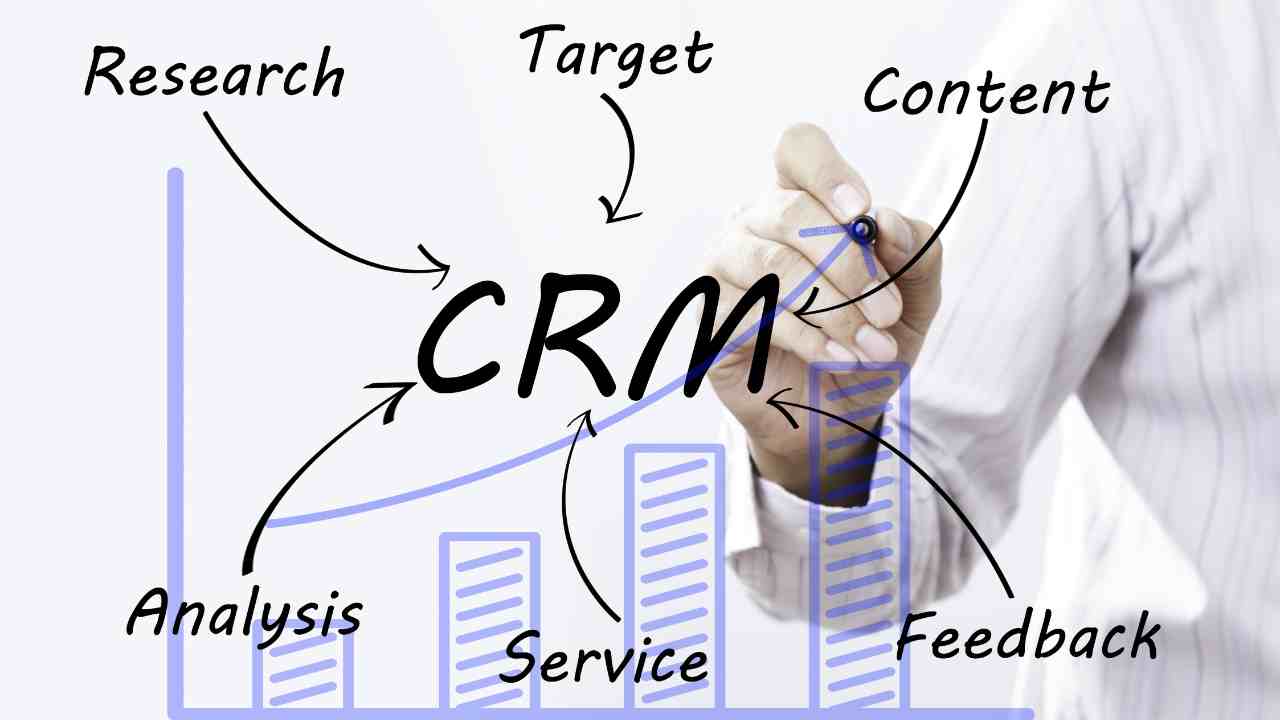Training Employees on Using CRM for Customer Service

Customer Relationship Management (CRM) systems have become an essential tool for businesses of all sizes. These platforms help companies manage their interactions with customers, streamline processes, and improve overall customer service. However, implementing a CRM system is not enough to reap its benefits. It is crucial to train employees on how to effectively use the CRM for customer service. In this article, we will explore the importance of training employees on CRM usage, provide valuable insights, and offer practical tips for successful training.
The Importance of Training Employees on CRM Usage
1. Maximizing CRM Potential:
- CRM systems offer a wide range of features and functionalities that can significantly enhance customer service. However, without proper training, employees may not be aware of these capabilities or how to utilize them effectively.
- Training employees on CRM usage ensures that they understand the system’s full potential and can leverage its features to provide exceptional customer service.
2. Improving Efficiency:
- CRM systems are designed to streamline processes and automate repetitive tasks. However, employees need to be trained on how to navigate the system efficiently to take advantage of these benefits.
- Proper training enables employees to use the CRM system effectively, saving time and effort in managing customer interactions and allowing them to focus on more value-added tasks.
3. Enhancing Customer Experience:
- A well-trained team can provide a consistent and personalized customer experience by utilizing the CRM system effectively.
- Training employees on CRM usage ensures that they have the necessary skills to access customer information, track interactions, and provide timely and relevant support, leading to improved customer satisfaction and loyalty.
Practical Tips for Training Employees on CRM Usage
1. Develop a Comprehensive Training Plan:
- Start by assessing the specific needs and requirements of your organization. Identify the key features and functionalities of the CRM system that are relevant to your customer service team.
- Create a training plan that covers these areas, including both theoretical and practical components. Consider incorporating hands-on exercises, role-playing scenarios, and real-life examples to make the training engaging and interactive.
2. Provide Clear Documentation and Resources:
- Develop user-friendly documentation, such as user manuals or quick reference guides, that employees can refer to during and after the training sessions.
- Include step-by-step instructions, screenshots, and troubleshooting tips to help employees navigate the CRM system effectively.
- Additionally, provide access to online resources, such as video tutorials or knowledge bases, that employees can refer to for further support.
3. Tailor Training to Different Roles and Skill Levels:
- Recognize that different employees may have varying levels of familiarity with CRM systems and different job responsibilities within the customer service team.
- Customize the training program to address the specific needs of different roles and skill levels. For example, provide advanced training for team leaders or supervisors who may require a deeper understanding of the CRM system’s analytics and reporting capabilities.
4. Encourage Continuous Learning and Feedback:
- CRM systems are constantly evolving, with new updates and features being introduced regularly. Encourage employees to stay updated on these changes and provide ongoing training opportunities.
- Establish a feedback loop where employees can share their experiences, challenges, and suggestions for improving CRM usage. This feedback can help identify areas for further training or system enhancements.
Case Study: XYZ Company’s Successful CRM Training Program
XYZ Company, a leading e-commerce retailer, implemented a CRM system to improve their customer service operations. Recognizing the importance of training employees on CRM usage, they developed a comprehensive training program that yielded impressive results.
The training program consisted of the following key elements:
- Initial Training Sessions: XYZ Company conducted interactive training sessions where employees learned about the CRM system’s features, navigation, and best practices for customer service.
- Hands-on Exercises: Employees were given hands-on exercises to practice using the CRM system. These exercises simulated real-life scenarios, allowing employees to apply their knowledge and gain confidence in using the system.
- Role-specific Training: XYZ Company tailored the training program to different roles within the customer service team. Team leaders received additional training on advanced features, such as generating reports and analyzing customer data.
- Ongoing Support: XYZ Company provided ongoing support through a dedicated CRM helpdesk and regular training updates. Employees could reach out for assistance or access online resources to enhance their CRM skills.
As a result of the training program, XYZ Company experienced several benefits:
- Improved Efficiency: Employees became proficient in using the CRM system, leading to streamlined processes and reduced manual effort in managing customer interactions.
- Enhanced Customer Experience: With access to comprehensive customer information and a better understanding of customer needs, employees were able to provide personalized and timely support, resulting in higher customer satisfaction.
- Increased Sales: The CRM system’s analytics and reporting capabilities enabled the customer service team to identify upselling and cross-selling opportunities, leading to increased sales and revenue.
Get Your FREE 14-Day Trial and Take Your Business To The Next Level with an All-In-One Sales and Marketing Platform for businesses, agencies and marketers.
Training employees on using CRM for customer service is crucial for maximizing the potential of CRM systems. It improves efficiency, enhances the customer experience, and ultimately drives business growth. By developing a comprehensive training plan, providing clear documentation and resources, tailoring training to different roles and skill levels, and encouraging continuous learning and feedback, organizations can ensure that their employees are equipped with the necessary skills to utilize CRM systems effectively.
Implementing a CRM system is just the first step. Training employees on CRM usage is the key to unlocking its full potential and reaping the benefits of improved customer service. With the right training program in place, businesses can empower their employees to provide exceptional customer experiences and drive long-term success.
Visit https://SaasExpert.ca – Your All-In-One Sales and Marketing Platform for small businesses, agency owners, and marketers.
Learn more about how to “Maximize Customer Service Through CRM Systems” right here.
Frequently asked questions about Training Employees on Using CRM for Customer Service.

What’s the Most Effective Way to Train Employees on CRM for Customer Service? 👨🏫
The most effective way to train your employees on using a CRM system for customer service starts with a solid onboarding process. It’s critical that your employees understand not just the ‘how’ but also the ‘why’ behind using CRM software.🛠️
Start with an in-depth orientation session to acquaint them with the CRM platform’s interface and key features. Follow this up with role-specific training: customer service agents might need a different set of skills compared to sales reps or marketers. Utilize both in-house expertise and vendor-provided resources like tutorials, webinars, and manuals. 📚
One-on-one sessions for individual difficulties, as well as regular refresher courses, can ensure that your team is up-to-date with CRM features and best practices. Using real-world scenarios during the training can make the learning more relatable and effective. 🌍
How Important Is It to Keep Employees Updated on New CRM Features and Upgrades? 🆕
Absolutely crucial. CRM systems are continually evolving with new features, updates, and integrations. An employee trained on an older version might not be utilizing the CRM to its full potential, which ultimately affects customer service quality. 📈
You should have a system in place for immediate dissemination of information about updates. Consider periodic training sessions whenever significant updates occur. This keeps your customer service team ahead of the curve and ensures you’re leveraging all the features for optimal customer satisfaction. 🌟
Should Employees Be Involved in the CRM Selection Process for Better Adoption Rates? 🤔
Yes, including employees in the CRM selection process can significantly improve adoption rates. After all, they are the ones who will be using it day in and day out. By involving them in the selection and even in the trial phases, you can ensure that the chosen CRM meets the practical needs of those on the front lines of customer service. 🛠️
Seek their input on features, usability, and any issues they encounter during test runs. This inclusion not only helps in choosing a CRM that’s a good fit for your company but also fosters a sense of ownership among employees, making them more committed to learning and using the system effectively. 🙌
How Can I Monitor and Assess the Effectiveness of CRM Training Among Customer Service Employees? 📊
Monitoring and assessment should be an ongoing process. Use key performance indicators (KPIs) to measure the training’s impact on customer service efficiency and quality. Metrics could include average response times, customer satisfaction scores, and the number of successfully resolved cases. 📈
Additionally, use the CRM’s analytics features to track usage patterns. Are employees making full use of the CRM’s capabilities? Are there features that are consistently ignored? This information can be a valuable guide for future training programs. 📝
What Kind of Support Should Management Provide to Employees During and After CRM Training? 🤝
Management should view CRM training as an ongoing investment rather than a one-time event. This means providing continuous support, which could range from additional training sessions, creating a dedicated internal CRM support team, or even having an open-door policy for CRM-related queries. 🚪
The goal should always be to make CRM usage as seamless as possible for the customer service agents. Regular check-ins, refresher courses, and an environment that encourages questions and discussions about CRM usage can go a long way in ensuring your customer service remains top-notch. 🌟
- crm
- customer relationship management
- Training Employees on Using CRM for Customer Service
- What is CRM Software?







